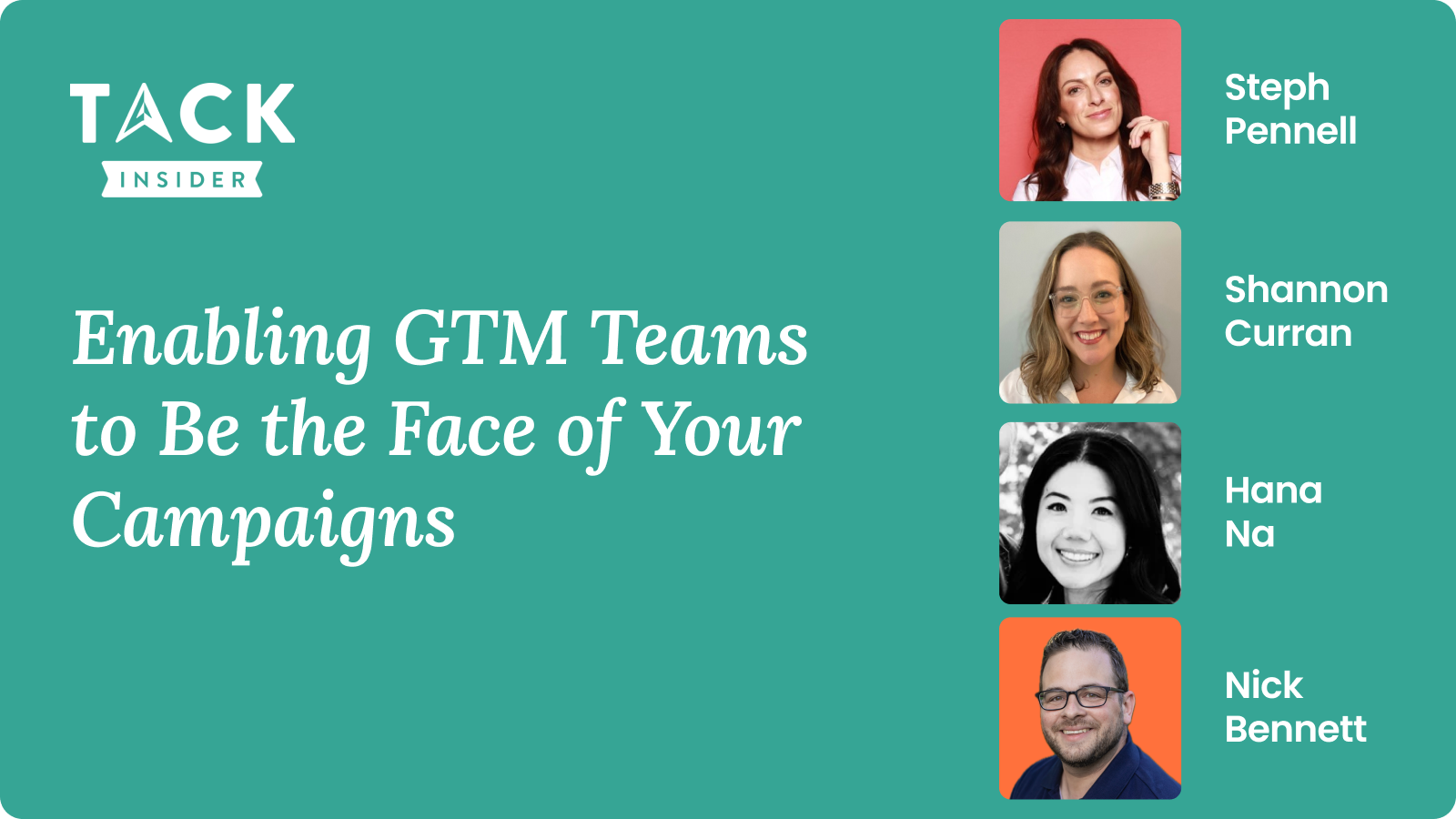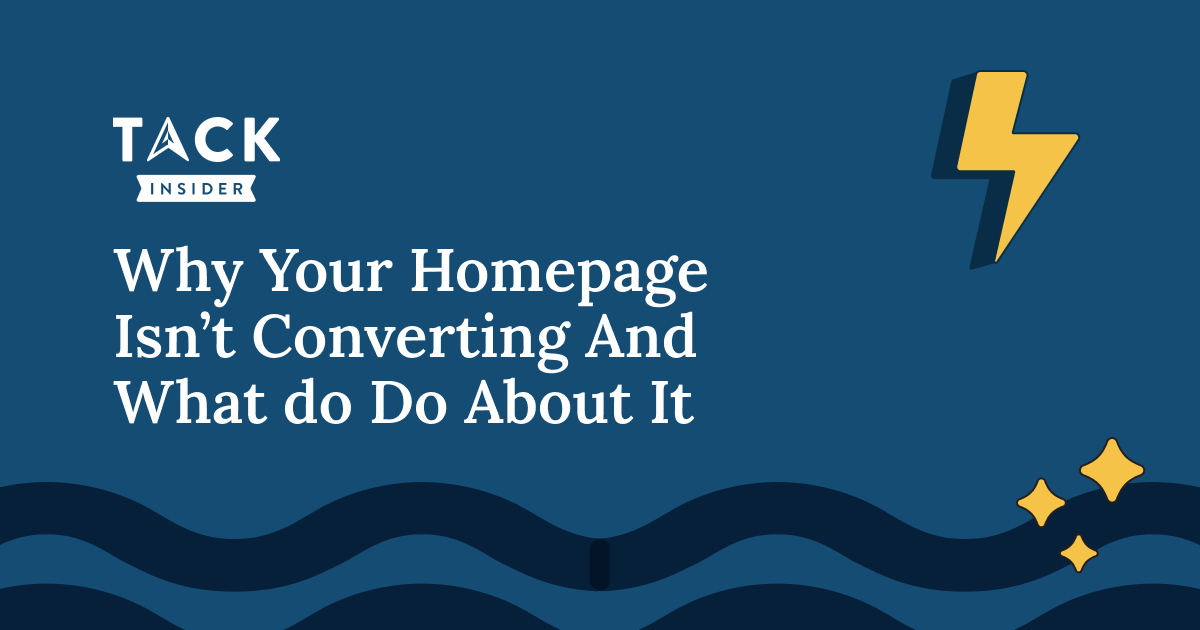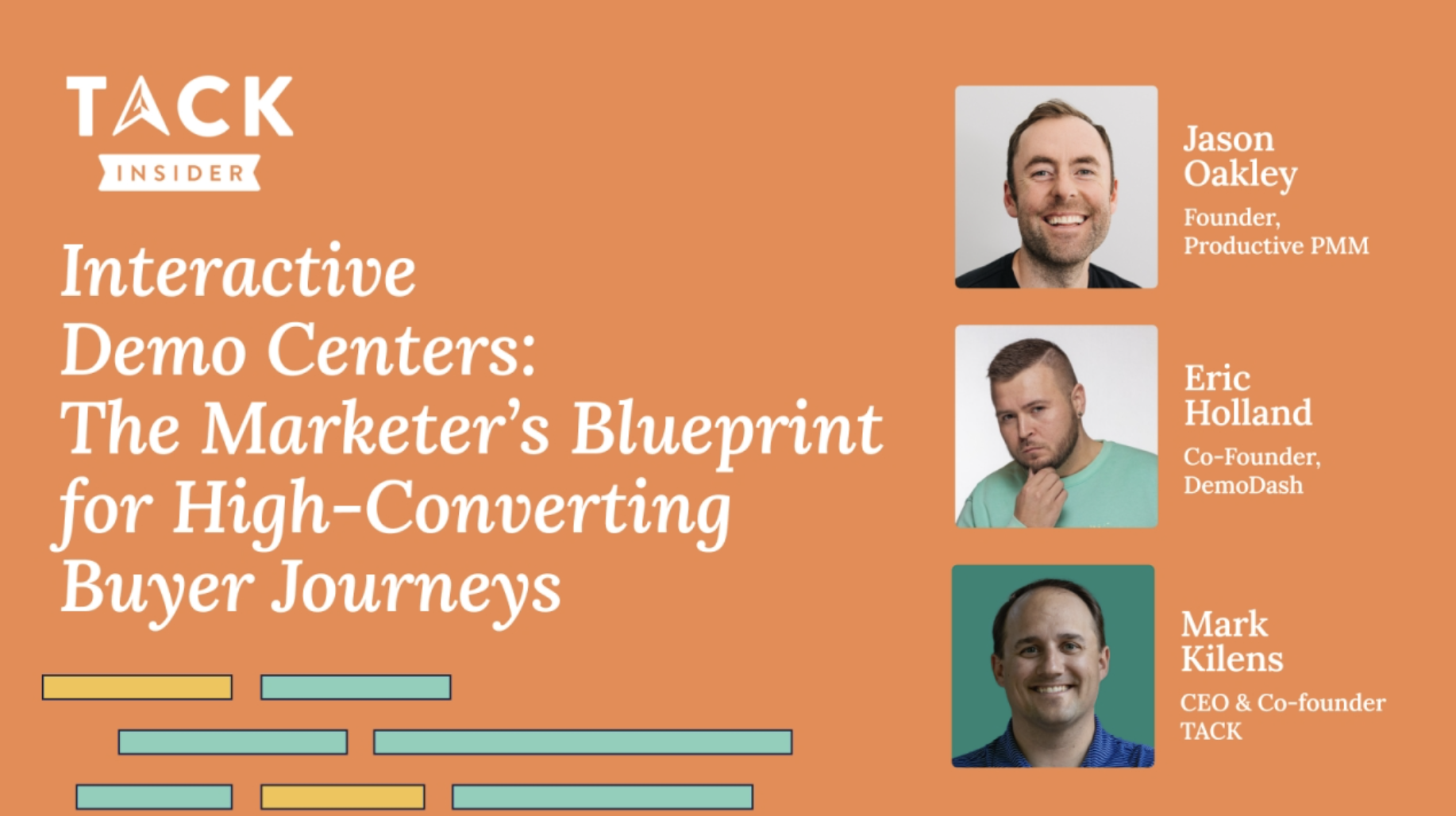Speakers: Steph Pennell, Shannon Curran, Hana Na
Overview
B2B campaigns too often default to product specs and buzzwords. But in reality, people influence buying decisions. In this TACK Insider session, the host is joined by colleagues to unpack what it really takes to create campaigns centered around internal voices, customer perspectives, and brand-aligned experiences. The big idea? Let humans, not headlines, do the heavy lifting.
Here’s how to turn internal expertise, thoughtful events, and digital amplification into campaigns that cut through the noise and convert.
Check out the full slides of the webinar
1. Start With Internal Influencers—Even If They Aren’t Loud
A strong campaign doesn’t start with messaging. It starts with people—especially those inside your company who have a differentiated point of view. That doesn’t mean they have to be charismatic. It means they need something worth saying.
To identify your best internal voices:
- Founders and CEOs often have the clearest articulation of why the company exists.
- Subject Matter Experts (SMEs) deeply understand customer problems, even if they’re not polished speakers.
- Customer-facing teams (like CS and Sales) often surface recurring themes worth broadcasting.
- Customers themselves can act as external SMEs—don’t overlook them.
Not everyone will be ready to jump into the spotlight. Start with questions like:
- What do you believe that most of your industry doesn’t?
- What do you talk about with nearly every customer?
- What was the moment you knew this company needed to exist?
These prompts help surface differentiated insights, even from quieter team members.
“Charisma only gets you so far. What really matters is a differentiated perspective.”
2. Map the Watering Holes Before You Publish
Once you’ve sourced great voices and stories, you need to meet your audience where they are—not just where your team hangs out.
Shannon calls this the “watering hole map”: a structured way to align thought leadership channels to where your audience actually learns.
Ask:
- What communities do your customers engage with?
- What social channels do they trust for professional info?
- Are your buyers more likely to be on LinkedIn, YouTube, or in industry-specific forums?
This step helps teams avoid the common trap of assuming LinkedIn or newsletters are universal. For some verticals (like manufacturing or developer tools), niche forums or live events are far more impactful.
3. Learn From B2C: Create Events That Prioritize Emotion and Community
B2B events often fall into the trap of being overly technical or transactional. But B2C brands have long understood the power of immersive, emotional experiences—and there’s a lot to borrow.
B2C brands like L’Oreal, Athletic Greens, and Nike use events to drive loyalty through:
- Emotional connection and storytelling
- Unique physical spaces that spark curiosity
- Shared experiences that turn users into fans
B2B companies can apply the same logic:
- Turn your customer advisory board (CAB) into a year-long VIP experience, not just a quarterly call.
- Skip the trade show booth and run a branded coffee truck or offsite activation.
- Repurpose event footage into shareable content that keeps the buzz alive long after it ends.
4. Make Paid Digital Work Harder for Your Campaigns
Running people-first campaigns doesn’t mean going low-tech. Paid media can supercharge reach and performance—if it’s deployed thoughtfully.
Here’s how Hannah recommends using paid campaigns effectively:
- Drive registrations for events and webinars by highlighting key content and countdown offers.
- Retarget post-event attendees with session clips or tailored content that aligns with what they saw.
- Repurpose content—recordings, quotes, slides—into gated or ungated lead magnets.
- Focus on ad quality to improve relevance scores, lower CPCs, and increase ROI.
Across channels like Google, LinkedIn, and Facebook, better content equals better placement and cheaper results. High-quality creative isn’t a luxury—it’s the difference between scaling and stalling.
5. Add a B2C Flavor to Your Creative—Without Losing Credibility
Too many B2B ads still look and feel like they were written for a boardroom. The best campaigns, however, often borrow from B2C—injecting humor, relatability, and emotion without sacrificing insight.
Some standout examples:
- Slack’s visual ads highlight productivity pain points with charm and clarity.
- Gusto’s “payroll without the pain” compares HR headaches to a dentist visit—a bold, funny analogy.
- Coda’s “Enough of this sheet” campaign uses clever wordplay to call out spreadsheet fatigue.
The common thread? These brands prioritize resonance over rigidity. They make the buyer feel seen—and that drives action.
Key Takeaways
- Internal voices drive trust—start with people who have unique insights, not just a title.
- Map your message to the right channels by creating a watering hole map.
- Treat events like B2C does—lean into emotion, surprise, and community.
- Use paid media for momentum, especially post-event retargeting and content amplification.
- Don’t be afraid to get playful—relatable, emotional creative works in B2B too.






